Description, name and photo of various types of caterpillars
Content
- Types of caterpillars
- Cabbage Caterpillar
- Butterfly moth caterpillar
- Redtail Caterpillar
- Swallowtail butterfly and its caterpillar
- Hawthorn Caterpillar
- Peacock Caterpillar
- Clothes Moth Larvae
- Caterpillars butterfly Admiral
Insects are the most diverse and numerous class of living beings living on the planet. Among them, butterflies are particularly beautiful. They attract the attention of people with their unusual wings, which have an intricate pattern. Caterpillars are one of the stages of butterfly formation.Some species of caterpillars are distinguished by an unusual appearance.
Butterfly larva
Butterflies have several stages of development. An adult individual lays eggs on the back of a leaf, on the fruits of fruit trees or garden crops, or in another secluded place. After some time, larvae appear from the eggs - small worms, which for their development and transition to another stage should consume a lot of food.
Butterfly larvae are called caterpillars. In this stage the insect can be from several days to several years. During this period, the caterpillar actively feeds and often becomes a pest of a plant, eating its fruit, leaves or bark. Then the larva forms a cocoon around itself and turns into a pupa. After a certain time, an adult individual, an imago, known to everyone as a butterfly, emerges from it.
Interesting!
Butterflies and their caterpillars have a direct ratio of sizes. Large caterpillars are the larvae of large butterflies, and vice versa.
Caterpillar varieties differ in size, appearance, habitat, but have a common body structure. The trunk of a butterfly larva consists of several segments:
- well distinguished head of rounded shape with the oral apparatus, organs of vision, and hornlike antennae;
- chest;
- abdominal;
- several pairs of limbs.
The caterpillars have several eyes, usually 5-6 pairs, located next to each other. The oral opening is equipped with small teeth for nibbling plants. The body is covered with small hairs, outgrowths that look like spikes. The caterpillar itself is very mobile and is able to quickly move around the surface, hooking on with hooks.
Types of caterpillars
Each species of butterfly corresponds to its own caterpillar. And it is not always the color of the larva coincides with the color range of the adult. The caterpillars are mostly herbivorous, but there are also predators. There are four types, which are caterpillars according to their preference in plant foods:
- polyphages are those that eat any plants indiscriminately, usually the offspring of moths (wine hawk, ophthalmic hawk, blind hawk, bear kaya, peacock eyes, moths);
- monophagous - caterpillars that feed on one specific plant species (cabbage soup, silkworm, apple moth);
- oligophages - eat plants belonging to the same family or type (swallowtail, pine scoopPolykene);
- xylophages are the larvae that prefer to feed on wood, bark (subcortical leafworm, apple glass bowl, tree spinner).
Various species of caterpillars in Russia can live in the subtropical regions of the Caucasus and the Krasnodar Territory, and in the northern regions of Siberia. On the territory of the country there are hundreds of species of these insects. The names of caterpillar species are of non-random origin. Usually they are associated with the main power source pests. Some caterpillars have received the name designating drawing on wings of a butterfly.
Found in Russia and valuable rare caterpillars, such as silkworm. Silk separation is a property inherent to all larvae. During its movement through the plant, the caterpillar selects a thin thread using a special spinning tube. This thread is the insurance for the insect in case of accidental fall from the plant.
Interesting!
Silkworm - valuable insect. A silk thread is produced from the cocoon of the butterfly, from which silk is produced commercially.
Small caterpillars, the size of 1 mm, and also giant caterpillars, reaching a length of 12 cm, inhabit the territory of Russia. shaggy, poisonous, and even changing their color and size during the stage.
The most common and well-known representatives living in Russia are:
- cabbage or white cabbage;
- peacock eye;
- peppered moth (surveyor);
- clothes moth;
- redtail;
- hawk moth;
- admiral;
- machaon
Cabbage butterfly
Cabbage Butterfly Caterpillar is one of the most common in the European part of Russia. The green caterpillar has a body 3-4 cm long, covered with black growths and hairs. The name is given in honor of her favorite dish - cabbage leaves. Garden wrecker besides cabbage likes to feast on other vegetable crops:
- radish;
- turnip;
- turnip;
- horseradish and others.
The duration of the stay of an insect in the caterpillar stage depends on weather conditions. This period can be from 2 to 5 weeks. However, even such a short period of time is enough to make a white-collar to cause serious damage to the crop.
Peppered moth
This caterpillar for an unusual method of movement is called a land surveyor. Her thin body is stretched out in a loop, pulling the back part forward, then the front part is pulled out along the surface. Brown coloring allows it to mask as bark color. The moth eats the needles of trees, currant leaves, hazel.
Redtail
The caterpillar is found in the forest-steppe zone of the entire continent, preferring to eat the leaves of various shrubs. Fluffy caterpillars are covered with brown or gray hairs, and the end of their body is painted in bright scarlet color, the presence of which was the cause of this name of insects.
On a note!
The red-tails with their bright tail still signal that they are poisonous. When this small five centimeter caterpillar makes contact with human skin, an allergic reaction occurs.
Machaon
A fairly large caterpillar lives in Europe, Asia, North America, in northern Africa. Her color is not inferior in beauty to the appearance of an adult individual. Photos caterpillars clearly demonstrate changes in color.At the first stage of its development, the caterpillar is black with spikes of bright red color. Then it becomes striped - green with black stripes, decorated with red spots. Bright swallowtail caterpillar Eats different cultures:
- carrot;
- parsley;
- celery;
- sagebrush;
- alder.
Blind hawk moth
Hawthorn caterpillar is found in central Russia, in Siberia, and in the Far East. It feeds on foliage of birch, poplar, willow. A green caterpillar with a horn on its tail perfectly disguises itself as a folded leaf of a tree. The diagonal thin strips on the body of the larva resemble leaf streaks. This coloring helps the hawk to hide from their enemies.
Peacock eye
The caterpillar of a beautiful night butterfly is known for its large size - some specimens exceed 10 cm in length. Large Green Caterpillar of the Peacock Eye lives in the western part of Russia, in the Caucasus, in the Crimea. The main food is fruit trees:
- Apple tree;
- pear;
- Walnut;
- plum;
- cherry.
On a note!
An interesting feature of the peacock eye is the change of color in the process of development of the larva.Before pupation, the yellow color changes to green. And the pupa itself becomes brown.
Clothes moth
Worm moth larvae cause great damage to people's personal belongings. White caterpillar with a brown head eats wool, fur products, cotton fabric. The female moth lays eggs in cabinets, storage rooms, warehouses, where outerwear is stored from natural materials.
On a note!
The larval stage of the dressing butterfly can last from one month to two years. The caterpillar can go without food for several days and withstand significant temperature fluctuations.
Caterpillars of the clothes moth are recognized as the smallest - the length of their translucent body varies from 1 to 12 mm. The more food they absorb, the longer and thicker they become. The pest lives everywhere in Eurasia, North America, Australia, some countries of Africa.
Admiral
A large shaggy black-orange butterfly is widespread in Russia. It is a migratory insect species. Arriving in more northern regions, lays eggs on the leaves of nettle or hop. Admiral winters in the southern regions.
On a note!
On the nettle also live similar to the Admiral's larvae, urticaria caterpillars.
A small black caterpillar with yellow stripes on its sides appears in May and in a few days creates a canopy around itself from the leaves of a forage plant. During the whole summer it feeds inside its shelter, remaining hidden from predators. In late August, the black caterpillar turns into a pupa.

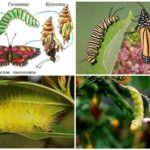

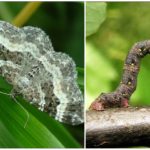
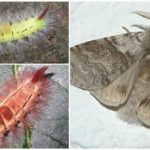
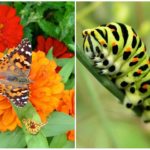
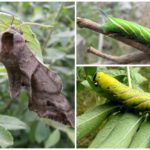
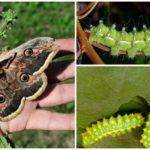
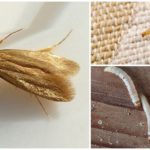
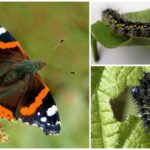
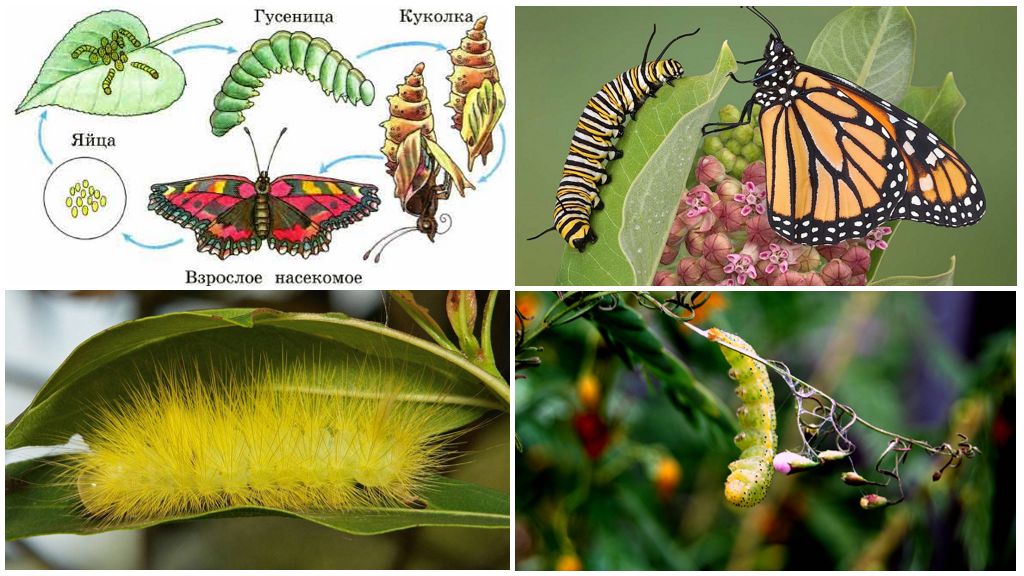

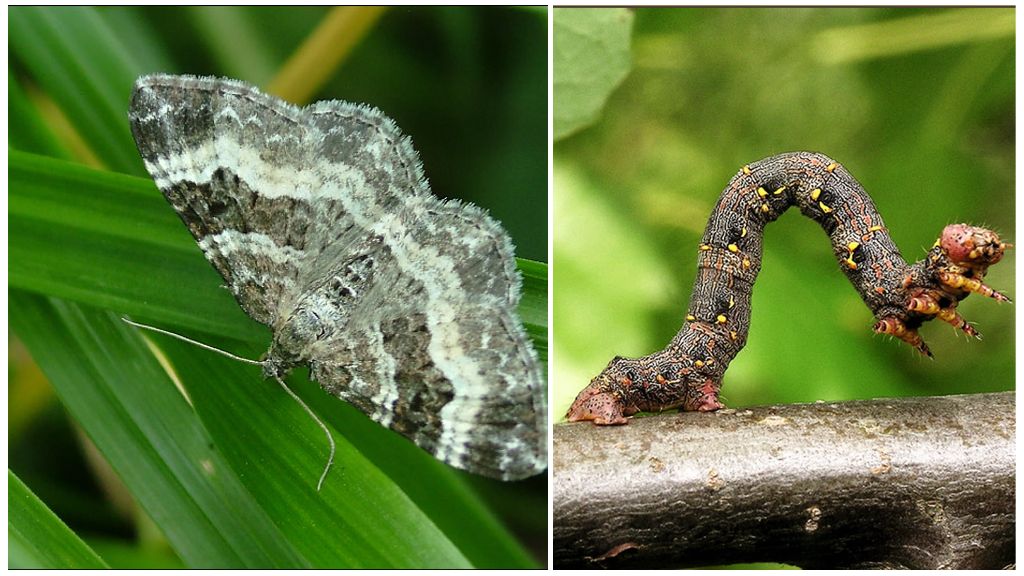

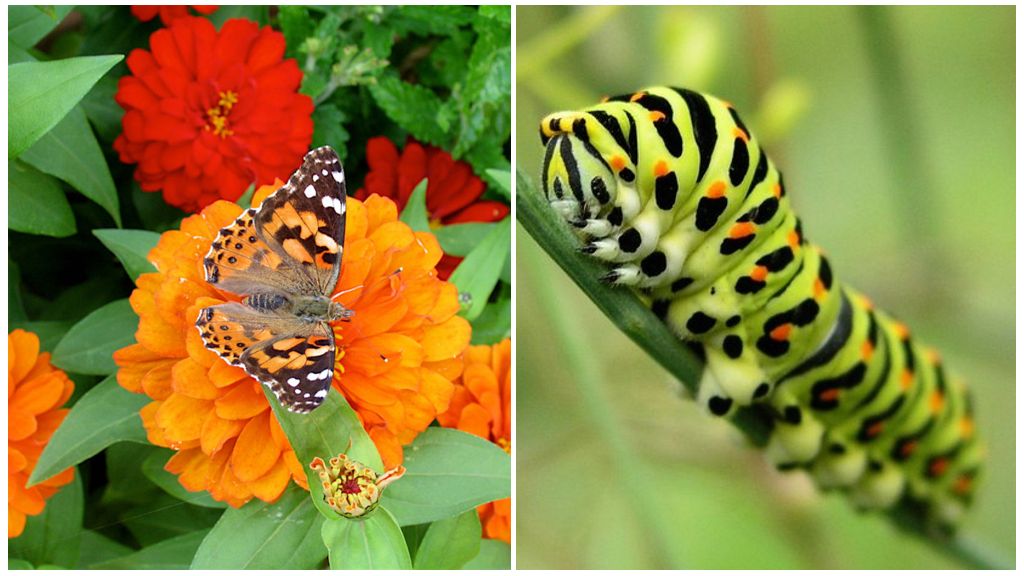
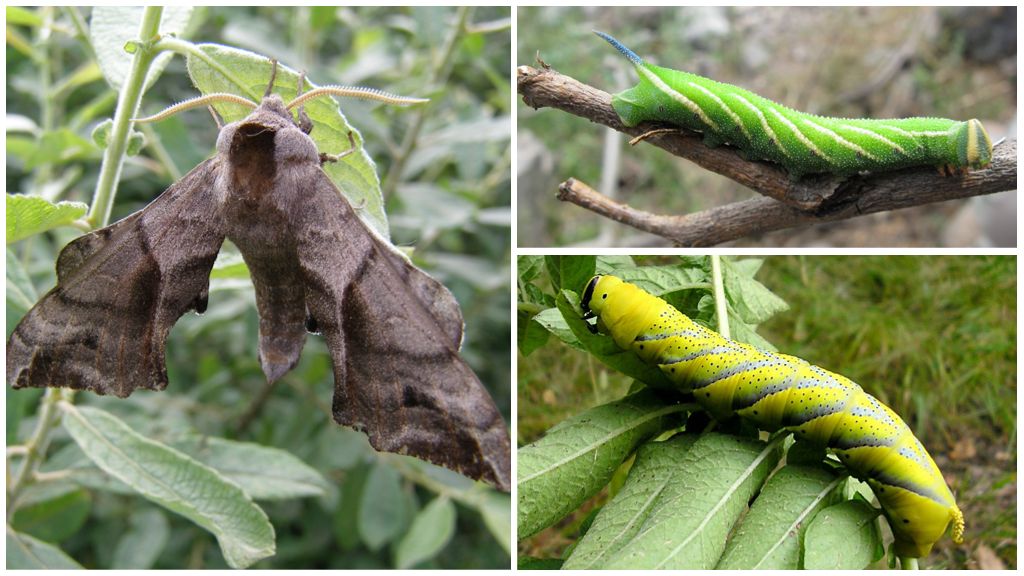




 (votes: 24, average rating: 4.13 out of 5)
(votes: 24, average rating: 4.13 out of 5)


